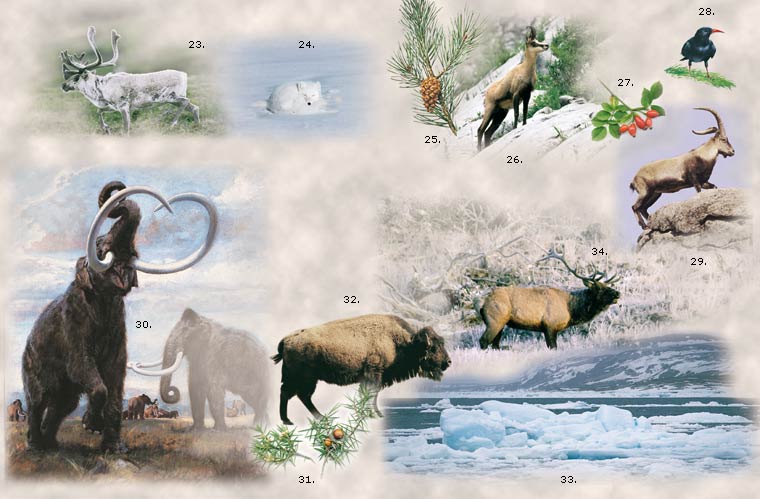The natural setting
Throughout human history, there have been many changes in the earth's climate, directly affecting the environment, and particularly plant and animal life. During the Upper Palaeolithic period (35,000-11,500 years before the present), in what is known as the Magdalenian period (between 17,000 and 11,500 years ago), Europe was af
fected by the last great Ice Age. Under the influence of a cold climate, the landscape was steppe or tundra like, with few trees mostly pines and deciduous species surviving in areas where the climate was more benign.
The different ecosystems were inhabited by the species best equipped to adapt to such conditions; wild goats, for example, were abundant in more rugged areas, whereas the leveller ground was occupied by deer, reindeer, bison, aurochs, horses, mammoths and other species. There were carnivores too, such as foxes and wolves, and birds such as ptarmigans, golden eagles and barn owls.
The rivers were home to trout, salmon and other species of fish, while the coasts abounded with molluscs, fish and sea birds, as well as sea mammals such as dolphins and whales.
gipuzkoakultura.net


gipuzkoakultura.net
miércoles 31 diciembre 2025
Bertan > The Magdalenian pendants of the Praileaitz I cave(Deba) > Versión en Inglés: The natural setting

23. Reindeer. 24. Arctic fox. 25. Branch of Scots pine. 26. Chamois. 27. Rosacea twig. 28. Chough. 29. Wild goat (Capra pyrenaica) 30. Mammoth. 31. Juniper twig.. 32. Bison. 33. Frozen seashore. 34. Red deer. © Xabi Otero


